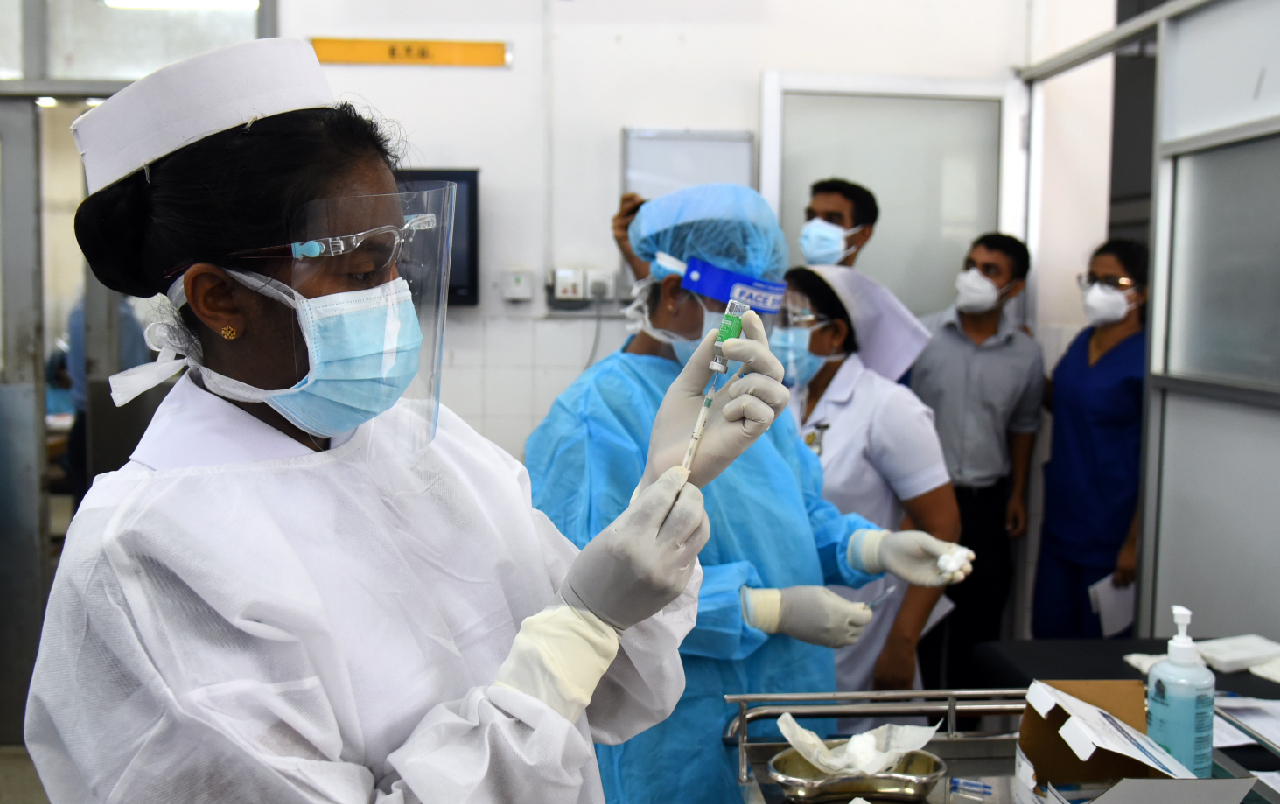In the worldwide scramble for limited supplies of COVID-19 vaccines, the most pressing questions are who is getting it sooner and who is getting the vaccine of their choice? The answers matter in the race to economic recovery. The rich and influential – across countries and within countries – are likely to be handed a distinct advantage, while the poorer and more vulnerable will lag behind.
Globally, these trends are already visible. Confirmed vaccine purchases to cover 8.6 billion doses with another 6.3 billion doses under negotiation point to individual countries purchasing as many vaccine doses as possible. Acquisitions are often far in excess of what is actually needed. The majority (55%) of confirmed purchases are destined for high-income countries by advance purchase agreements with developers. In contrast, low and low middle-income countries have managed to secure only 1.4 billion doses (or less than 15%).
Thus, some rich countries will end up with enough doses to vaccinate their population several times over. The COVAX mechanism aims to vaccinate 20% of low-income country populations before much broader (if not universal) vaccination in high-income countries happens. It has clearly failed to address cross-country equity concerns.
Within countries, too, vaccine distribution is troubling. The rich and powerful can bypass government priority systems, as reported in the Philippines. Additionally, the more privileged can also corner the available supply of higher-rated, and hence more highly demanded vaccines. As governments make room for private sector involvement in the purchase of vaccines, such disparities in access will only widen further.
Thus, issues of equity lie at the core of the COVID-19 vaccination programme.
Asia’s struggle for vaccines
Nowhere is this more evident than in South Asia. With a reasonably good take-up rate, ranging between 66% in Pakistan to 82% in Bangladesh, the fiscal cost of vaccination programs is also fairly manageable. It lies at 0.4% of the 2021 budget and 0.8% of the 2022 budget, on average, for the South Asian economies. Access to vaccines, however, is the bigger challenge.
India has a head start. As one of the single largest licensed producers of AstraZeneca, it is administering nine doses per 100 people. Neighbouring countries were early beneficiaries of sizeable donations as a part of India’s ‘vaccine diplomacy’ and are in the queue to receive their pre-ordered purchases. These shipments, however, have run into delays due to supply disruptions and soaring infection rates in India itself. Most have since hedged their bets with other affordable alternatives, such as Sputnik-V and Sinopharm. Yet, the vaccination process is taking off slowly. Bangladesh and Sri Lanka, for instance, have a vaccination rate of less than 4%. Without the same financial resources as rich countries to place advance purchase orders, countries like Sri Lanka started disadvantaged. And it got worse. Having administered the first dose to part of its population, now it is unsure if there will be enough supply for the second dose.
As supplies tighten, the risks of inequities rise. Having administered less than 0.5 doses per 100 people, Pakistan is one of the first countries to allow the private sector to import and sell vaccines. No price caps are being imposed for fear that any such interference will thwart importers. Thus, wealthier patients will be able to get quicker access, and possibly even the vaccines of their choice, than poorer ones.
Inequitable access will inevitably raise tensions as the region continues to experience a surge in infections. For policymakers, there are lessons in this process. Important decisions need to be made at both national and multilateral levels.
Possible ways to achieve vaccine equity
More options have to be explored at the global level to ensure that enough doses are available worldwide. One such proposal is for the more affluent countries with stockpiles of excess vaccines to donate these to the COVAX initiative. But, transferring vaccines already committed to a particular country is not as easy as it appears. Stringent rules and regulations hinder a quick process. Vaccines can be absorbed into COVAX more easily if they are donated before leaving the factory gate.
Distributing licenses to produce COVID-19 vaccines is another option. Early attempts led by India and South Africa to get an agreement to temporarily waive intellectual property rights on COVID-19 vaccines failed. Not surprisingly, pharmaceutical companies resist such moves. They argue that they have to secure a reasonable return on their investments and guarantee that drug manufacturing standards are maintained. One thing is certain; the current vaccine debate goes to the heart of global governance on equity issues.
Indeed, there is a strong argument that a global vaccination programme is a matter of self-interest. If COVID-19 is left to spread, the risks of it mutating to an extent where available vaccines and treatments no longer work is high. Thus, immunisation successes in one country or region will not ensure the safe health of that population while any single country is still fighting the virus.
At the country level, the more significant challenge today is securing stocks of vaccines, as soaring infections disproportionately impact the young in the third wave of infections. Existing protocols for the vaccination programme to proceed in stages will become more complex. In the first round of vaccinations, most countries prioritised protecting older adults, healthcare workers, and other high-risk individuals before vaccinating wider population sections.
In this scenario, with governments under pressure to deliver, the entry of private sector players to meet vaccination demands seems almost inevitable. Rather than relying solely on competition to set prices, though – a process that saw price hikes in masks and sanitisers at the height of the pandemic – governments need to intervene in price setting. Adequate regulations on storage, delivery and administering of vaccines have to be a part of that process.
For now, it seems that the current uneven distribution of vaccines will hand richer countries a distinct advantage in the COVID-19 recovery efforts.
Text editor: Gabriela Keseberg Dávalos


